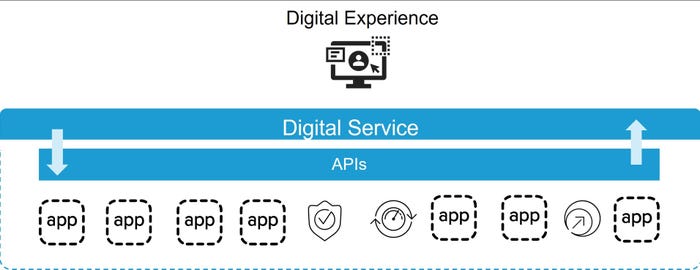Where are the Apps in ‘Adaptive Apps?’Where are the Apps in ‘Adaptive Apps?’
App delivery and security have typically been afterthoughts. Adaptive apps try to address these issues to ensure application availability and security.
September 26, 2022

The notion of adaptive apps is nearly a fantastic one; applications able to automagically optimize performance, scale up and down and across the globe, and neutralize threats before they impact the business.
This is fantastic, in part, because most of the capabilities necessary to perform any of these tasks is outside the realm of what is considered the responsibility of an application. Applications don’t routinely adjust their parameters for performance or scale themselves up or down, and they certainly don’t move themselves from one location to another. External services and systems do that. That's why app delivery and security exist, after all, to provide those functions that aren't considered part of the app but are necessary to scale, secure, and speed it up.
In fact, when you get down to it, discussions about adaptive apps today rarely have anything to do with the app. It’s all about the infrastructure, networks, environments, and services needed to make applications appear adaptive. So, what role does an “app” play in adaptive apps, anyway?
That’s a great question, thanks for asking.
The Role of Apps in Adaptive Apps
The role of apps in a digital-first world is changing. It’s not that they’re unimportant or fading into irrelevance. It's more that their role is changing dramatically, along with the ways in which we design, develop, deploy, and operate them. Today, the focus is on 'digital services,' of which apps play a significant role.

Most of us are aware that digital services are “experiences” stitched together from multiple applications. Digital services guide us through processes, with specific steps in that process represented by applications. This is one of the reasons we see APIs rising as a significant driver of investment – in the enterprise and in the industry. APIs are the way digital services are 'glued' together and the way applications – whether monoliths or microservices – communicate internally to keep the process flowing. Apps are the ‘building blocks’ of digital services. They represent business capabilities that, when orchestrated properly, create a seamless ‘digital experience.’ They remain a core – and critical – component of digital services.
But you'll also note that along with apps are app services – app delivery and security, to be specific. In the past, these have been add-ons, after thoughts, and sometimes stop-gap reactionary tools introduced to address a specific threat to availability or security.
There are two reasons these technologies should be considered first-class citizens in a digital service definition:
The reliability and security of the digital service depend on these technologies. Without load balancing or ingress control, apps cannot scale, and thus digital services cannot scale and will fail to deliver promises of performance and safety for users. Because the capacity, performance, and security of an entity is dependent on the capacity, performance, and security of its parts, the need to scale, secure, and optimize apps remains a requirement for digital services. Indeed, digital services are largely process and presentation. Actual business capabilities remain the domain of applications.
The sheer size and reach of digital services demands far more autonomous operation. The ability to scale on demand, adjust performance policies on demand, and react to potential threats on demand do not allow the time necessary for human intervention. To achieve efficiency of scale, business and operational expectations SLOs for applications must be specified programmatically and acted on automatically under the governance of human experts. As we’ve established that functions like scale, security, and performance are assumed to be the responsibility of app delivery and security technologies, they must be designed into the digital service and delivered as a holistic architecture rather than as add-on afterthoughts. The capability to meet SLOs must be designed into the digital service.
Now, taken together, apps, app delivery and security, and the automation necessary to allow for autonomous action needed to meet SLOs – e.g., scale out, neutralize attacks, migrate workloads – enable what many are calling ‘adaptive apps.’
One could say it’s an architectural approach to ensuring all apps that make up a digital service are able to adapt to changing conditions, thus ensuring the performance, security, and availability of the digital experience.
Adaptive Apps is still about Apps
So, where are the apps in adaptive apps? Right where they’ve always been; at the core of a digital experience, expressing business capabilities and enabling consumers – that’s you and me – to enjoy the benefits of a digital-first world.
Adaptive apps is still about apps, and it's just a more modern way of approaching how we deliver and secure them.
Related articles:
About the Author
You May Also Like




